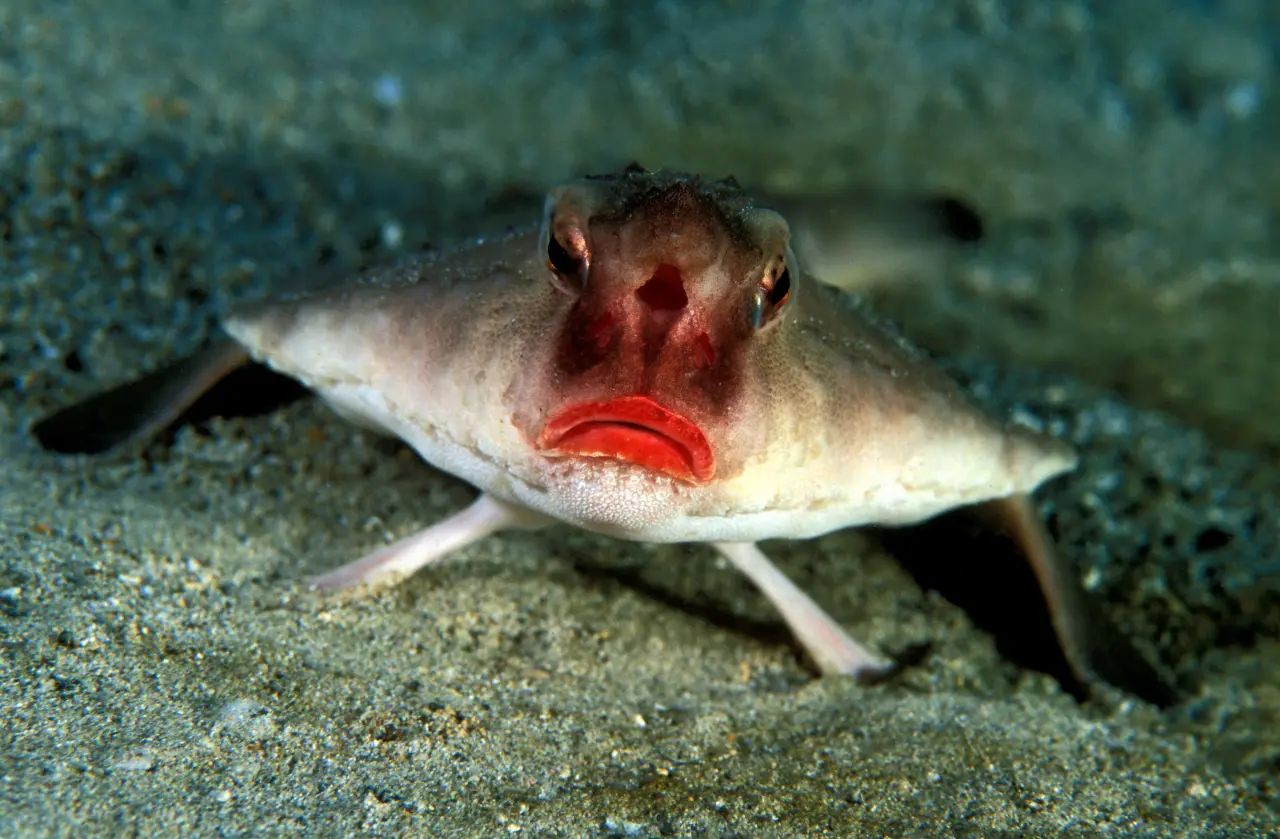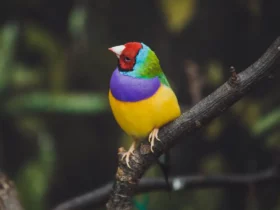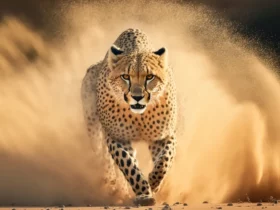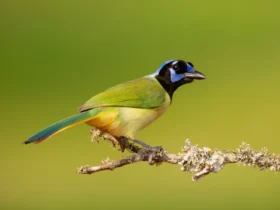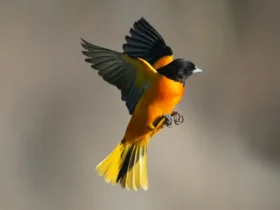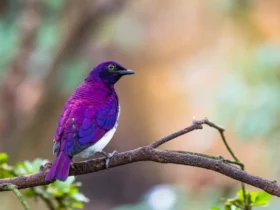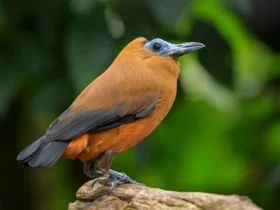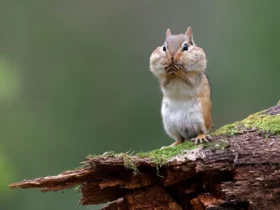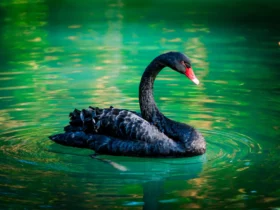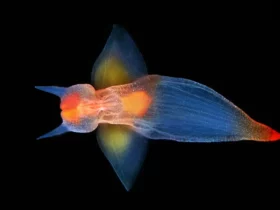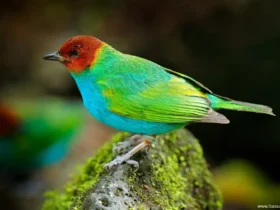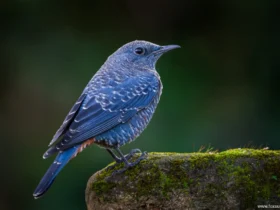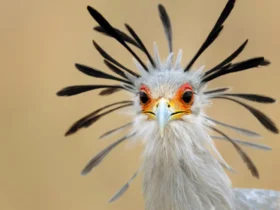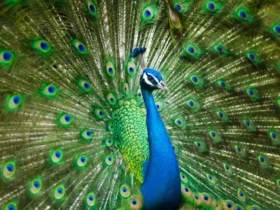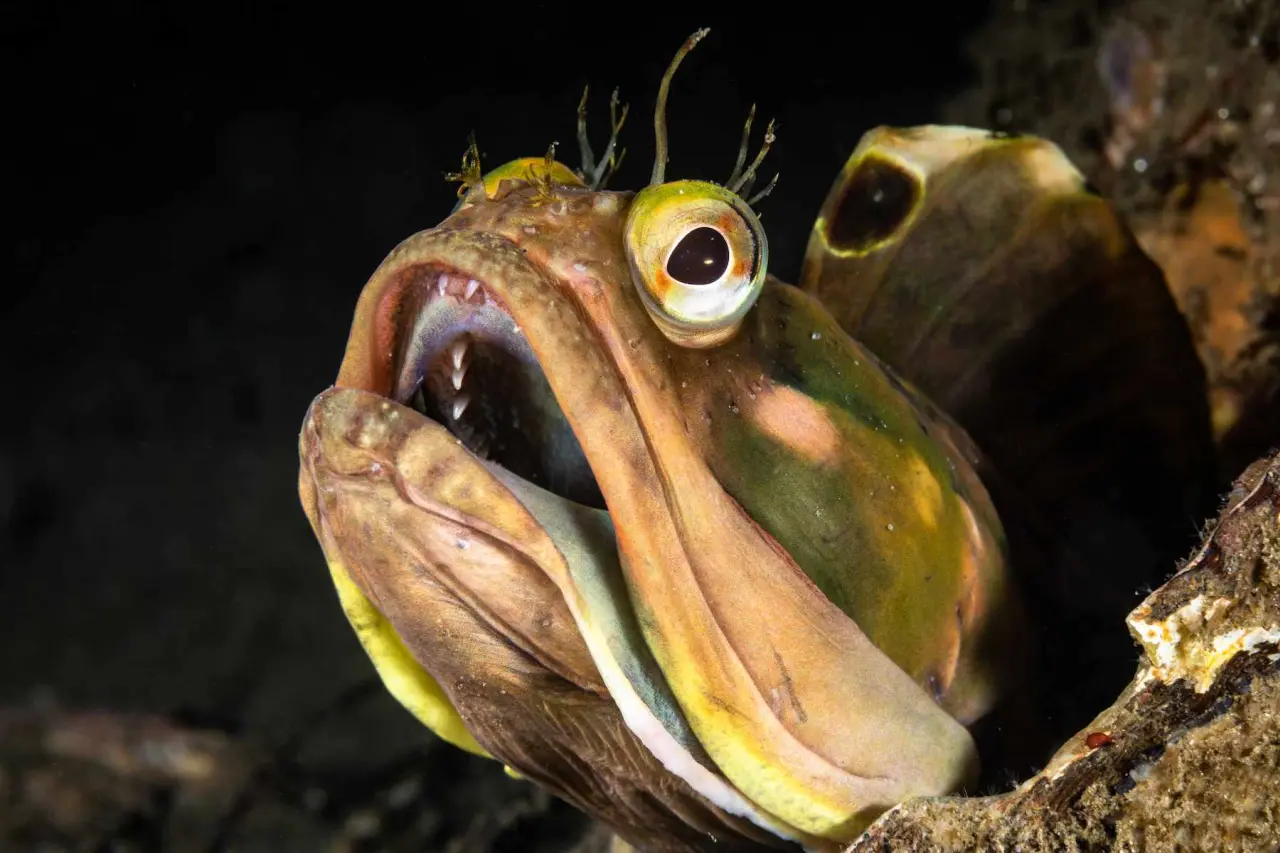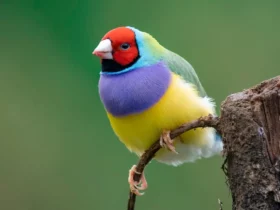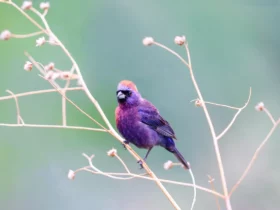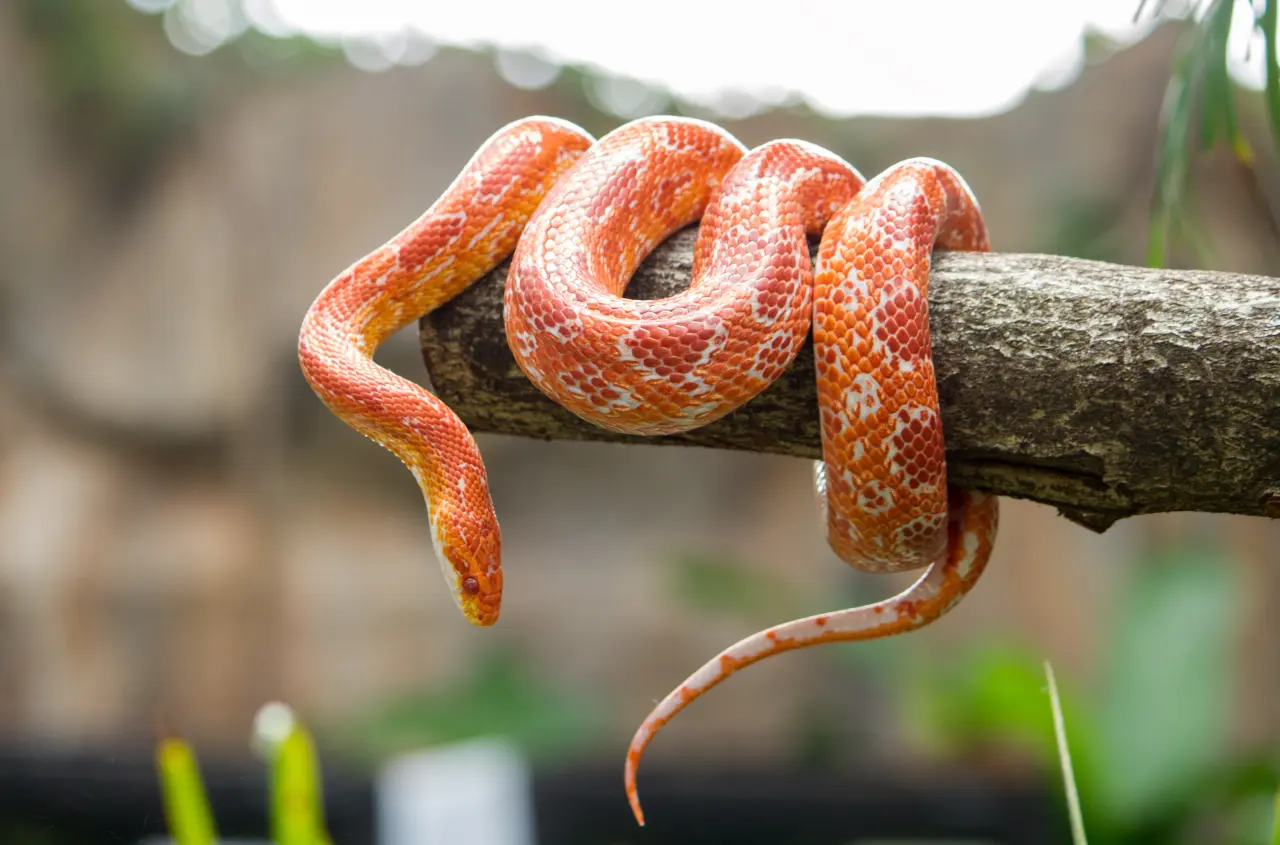The animal kingdom is full of diverse and extraordinary creatures that continue to fascinate us. Some animals have adaptations that allow them to thrive in unique environments, while others have bizarre physical traits or behaviors that make them stand out from the rest. In this article, we will delve deeper into the animal kingdom and discover 50 weird animals that will leave you awestruck:
01. Satanic Leaf Tailed Gecko
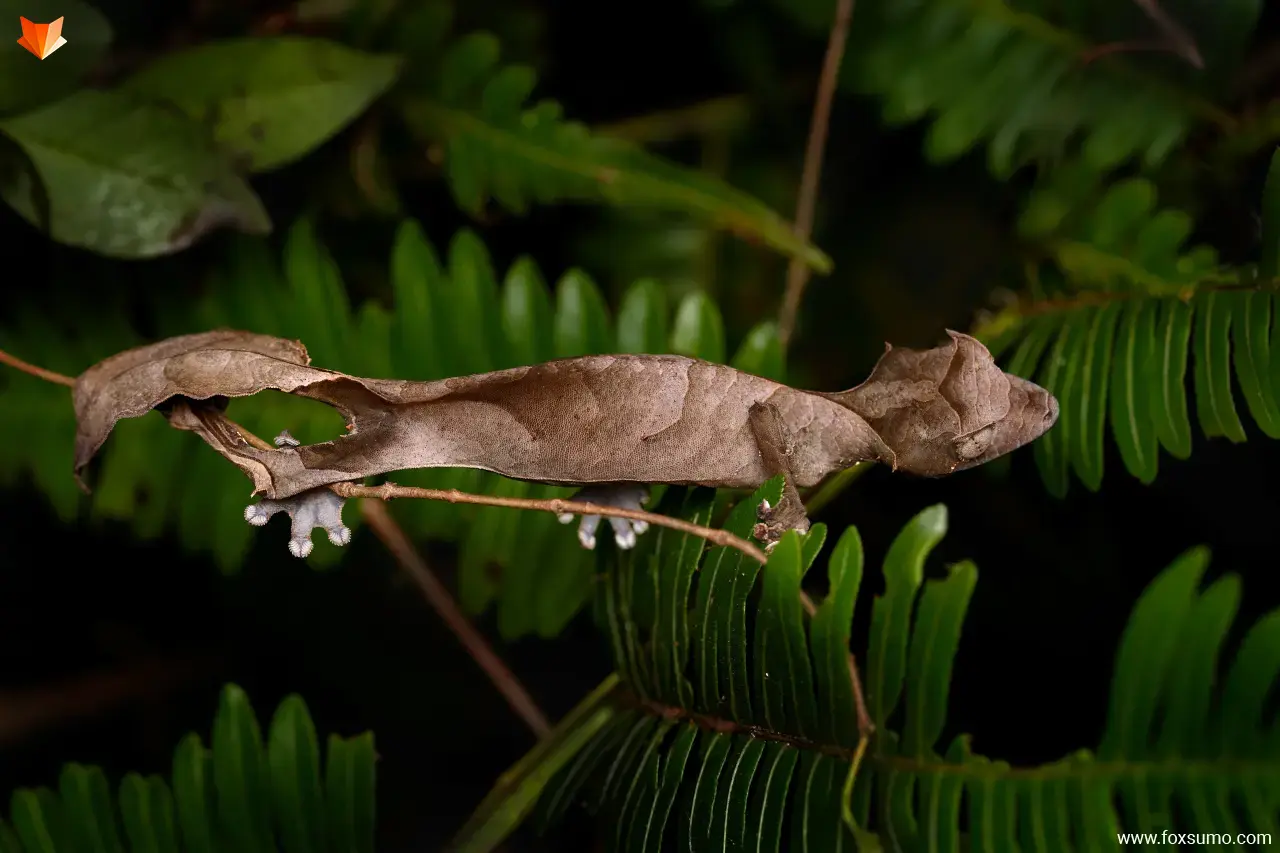
The Satanic Leaf Tailed Gecko (Uroplatus phantasticus) hails from the rainforests of Madagascar and is renowned for its incredible camouflage abilities. This peculiar creature has a leaf-shaped body, tail, and jagged edges that resemble dead leaves. With its uncanny appearance, it can easily blend into its surroundings, making it virtually invisible to predators. The name “satanic” comes from the horn-like projections on its head, adding to its mystique.
02. Glass Frog
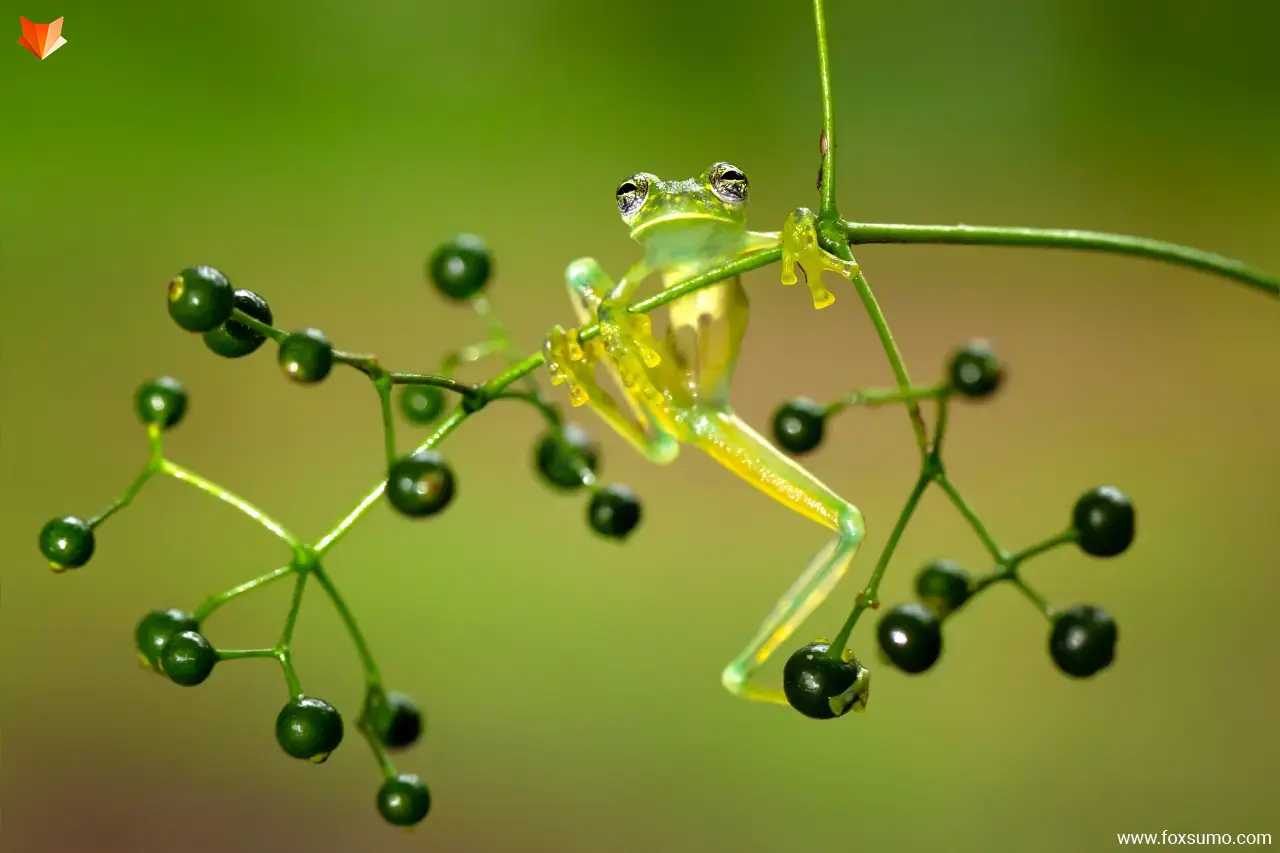
As the name suggests, the Glass Frog (Centrolene sp.) possesses translucent skin, allowing its internal organs to be visible to the naked eye. These extraordinary creatures can be found in Central and South America, and their unique feature provides an awe-inspiring glimpse into their inner workings. The translucent skin allows scientists to observe their beating hearts, digestive systems, and even their eggs. With their small size and green coloration, they are also excellent at blending into the foliage of their rainforest habitats.
03. Axolotl
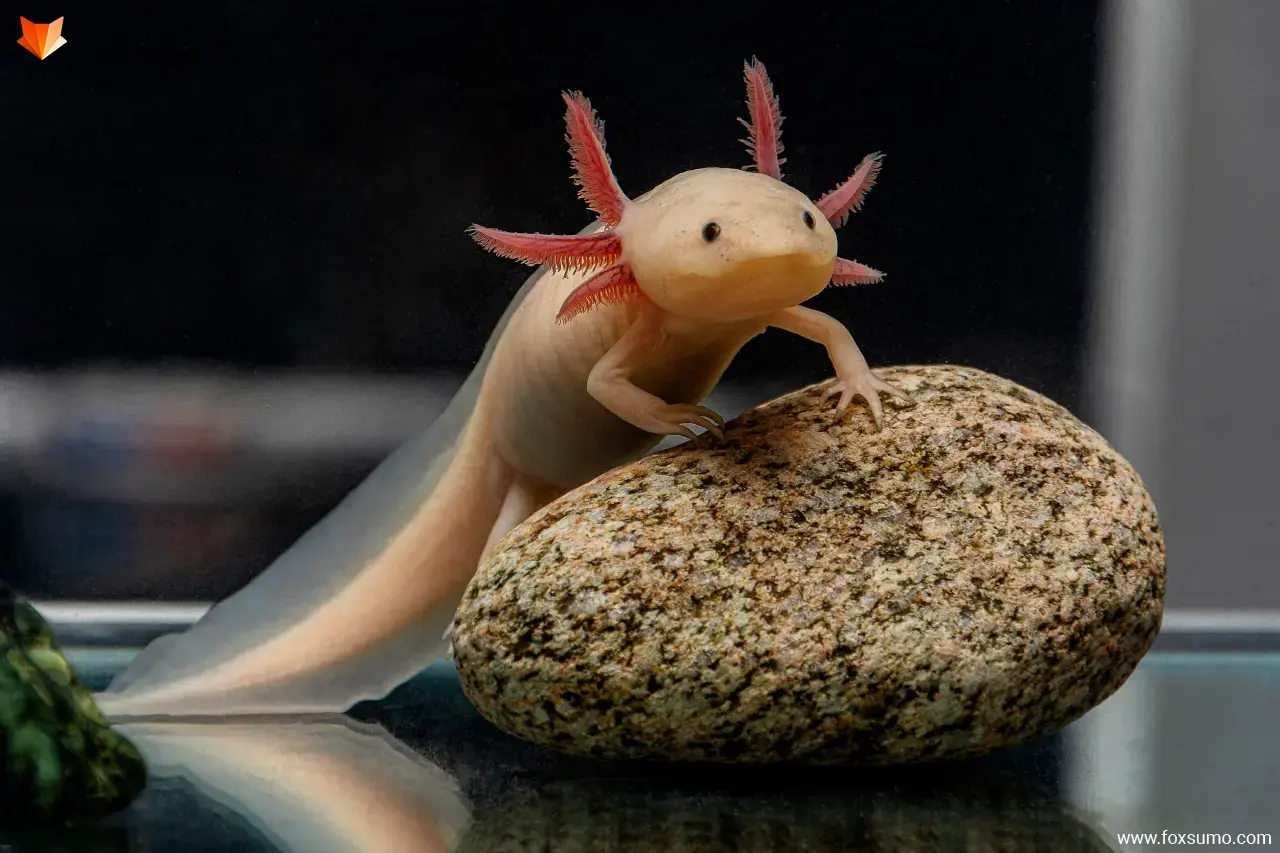
Native to the ancient lake system of Xochimilco in Mexico, the Axolotl (Ambystoma mexicanum) is an amphibian that possesses some remarkable abilities. Often referred to as the “Mexican walking fish,” this creature is not actually a fish but an aquatic salamander. What makes the Axolotl truly bizarre is its ability to regenerate lost body parts, including limbs, spinal cord, and even parts of its heart and brain. It remains in its larval form throughout its life, retaining its juvenile characteristics, which is a unique trait among amphibians.
04. The Honduran White Bat
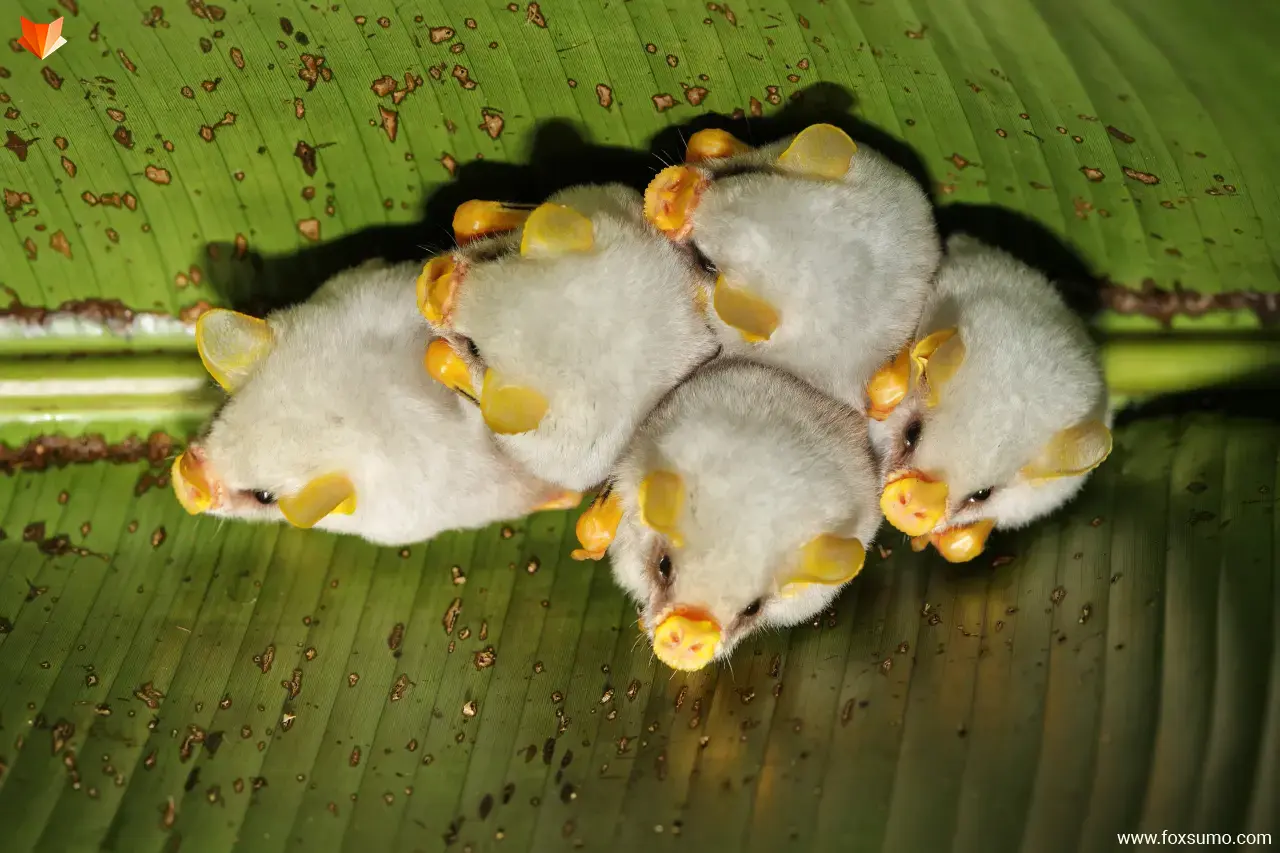
The Honduran White Bat (Ectophylla alba) is a small, adorable creature found in the rainforests of Central America. What makes it truly peculiar is its striking appearance and unique roosting behavior. These tiny bats have snow-white fur and vibrant yellowish-orange ears and nose. Instead of roosting in caves or trees like most bats, they create shelters by “tent-making.” They bite into large leaves, causing them to fold and form a shelter, providing protection from predators and harsh weather conditions.
05. The Jerboa
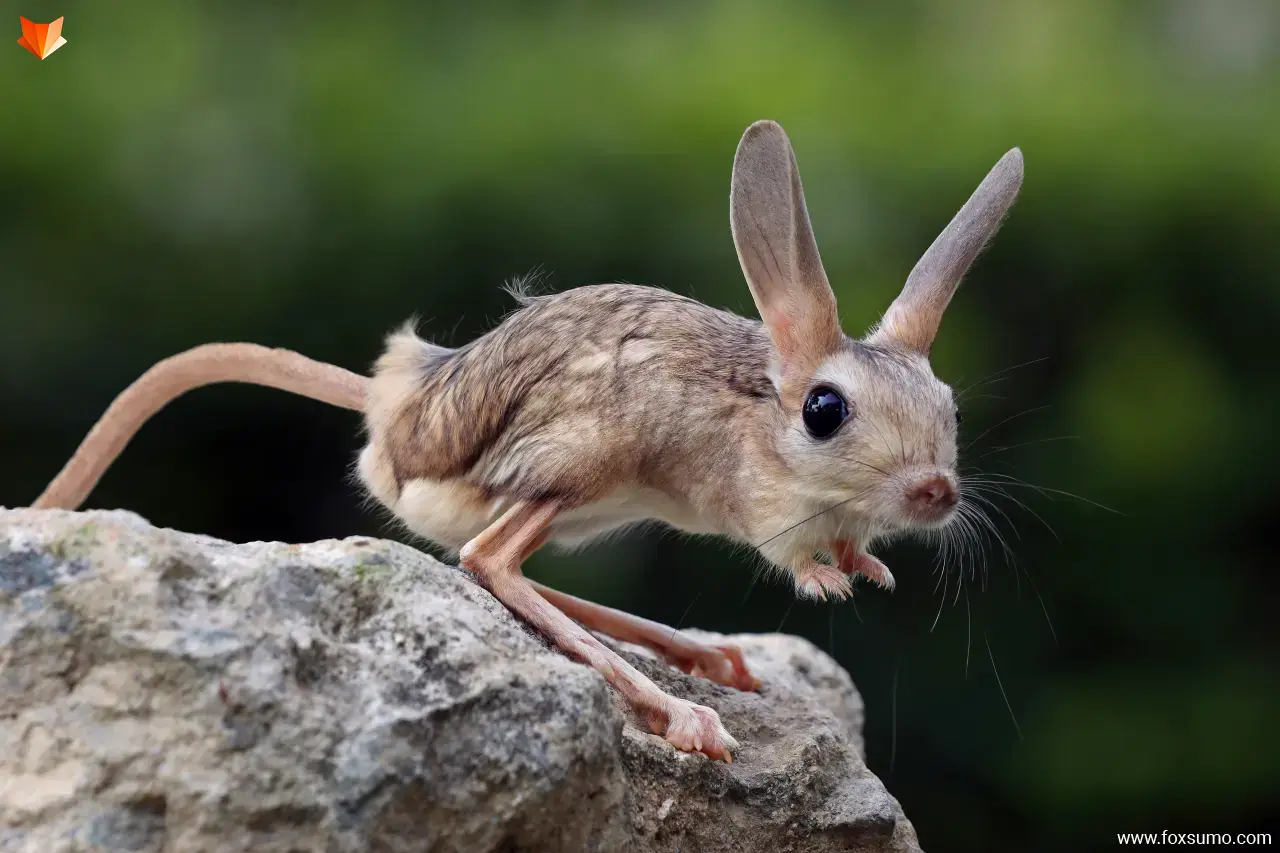
Resembling a miniature kangaroo or a mouse on stilts, the Jerboa is a small rodent known for its long hind legs and remarkable jumping ability. These desert-dwelling creatures can be found in regions of North Africa and Asia. Their long legs and distinctively large ears help them regulate body temperature in the scorching desert environment. The Jerboa’s unique hopping locomotion allows it to cover significant distances quickly, escaping predators and efficiently foraging for food in arid landscapes.
06. Honeypot Ant
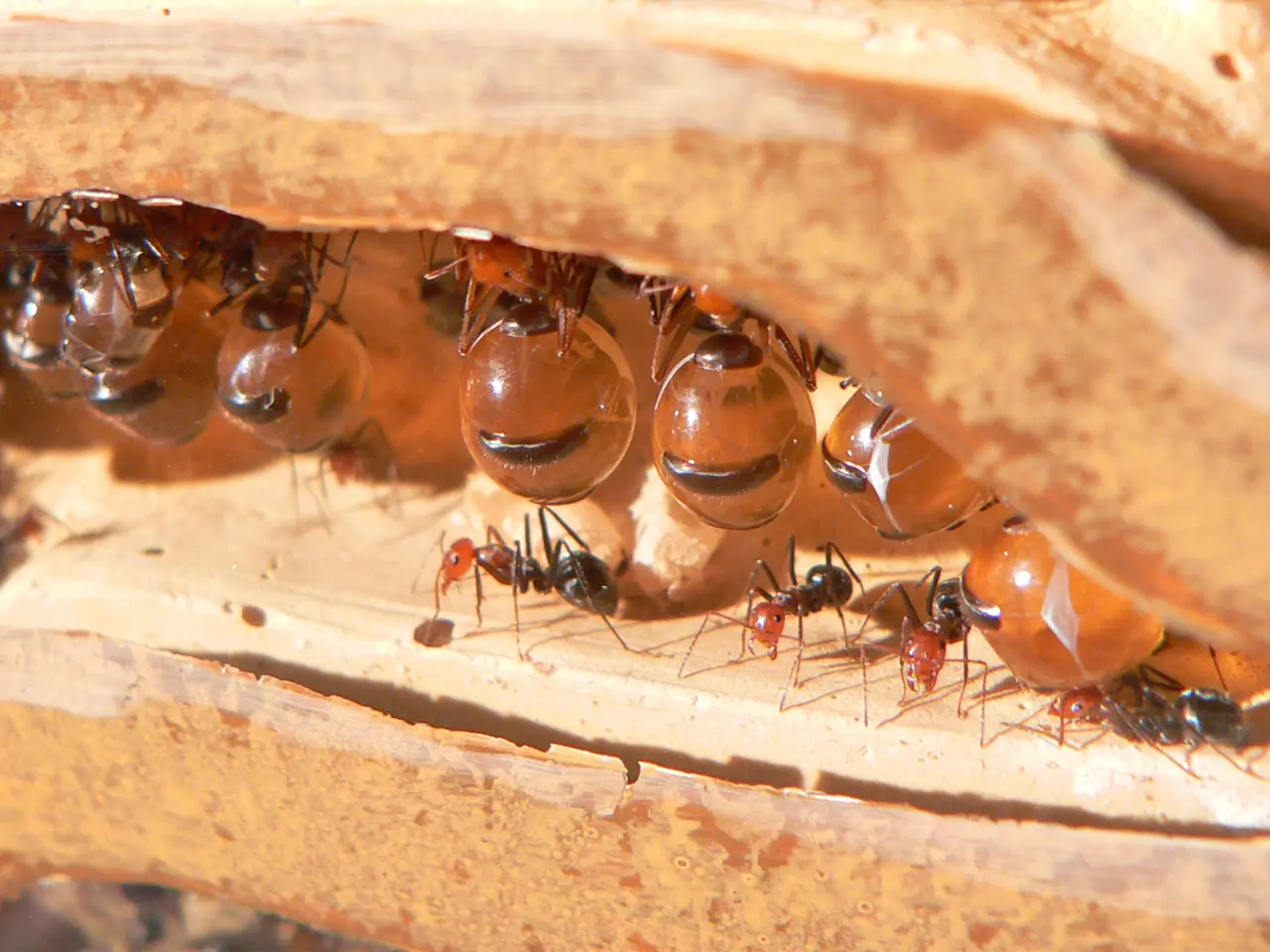
The Honeypot Ant (Myrmecocystus spp.) is a species of ant that has a unique ability to store food in their abdomen. These ants have workers that gorge on nectar and honeydew and store the excess food in their bodies, which can expand to up to ten times their normal size. The workers’ abdomens become “honeypots,” which they use to feed the colony during food shortages. These fascinating ants can be found in arid regions of North America.
07. Australian Thorny Devil
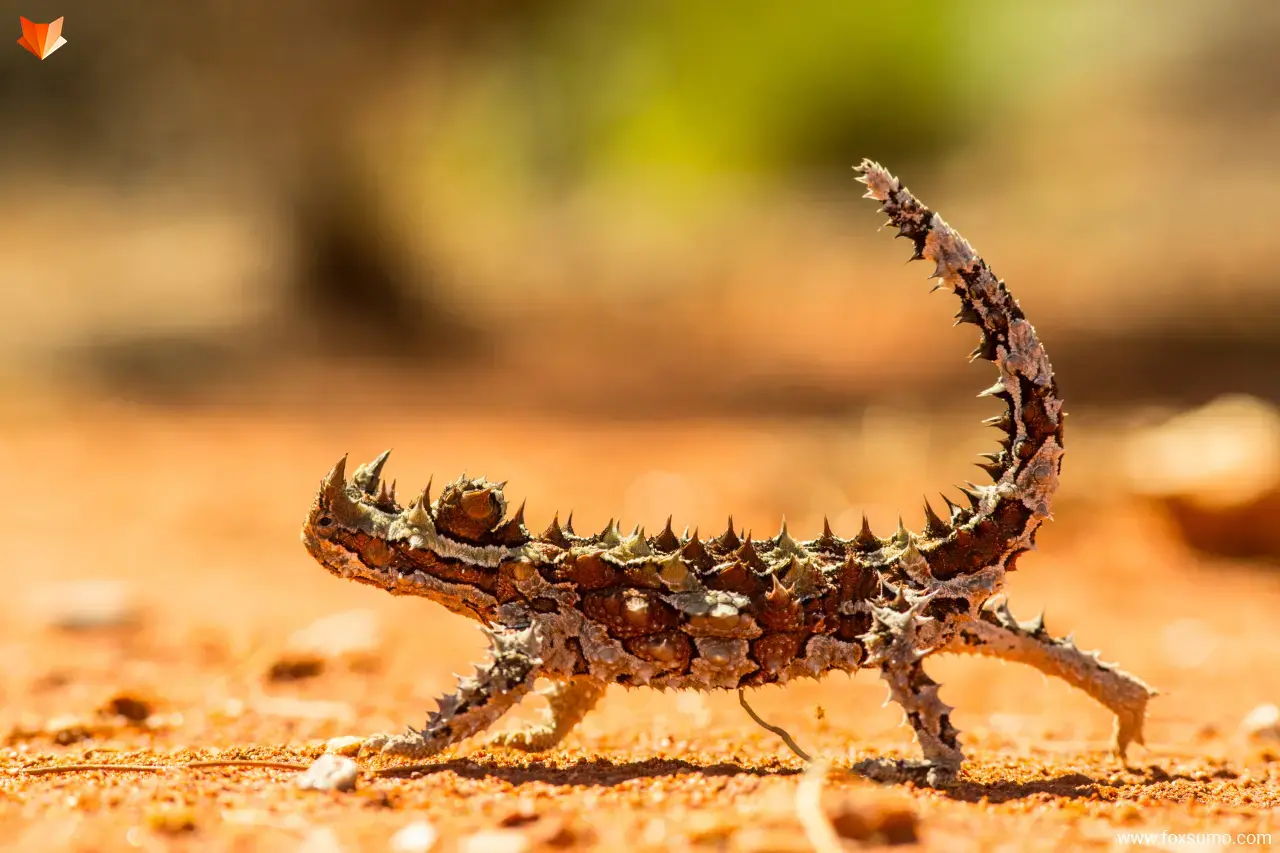
The Australian Thorny Devil (Moloch horridus) is a small reptile that is native to the arid regions of Australia. These spiky creatures are covered in sharp, conical spines that help protect them from predators. Their distinctive appearance also helps them blend into their sandy surroundings. The Thorny Devil has a unique adaptation for survival in the desert: it collects moisture from dew and rain through tiny grooves in its skin, which then flows down channels to its mouth.
08. Shrew
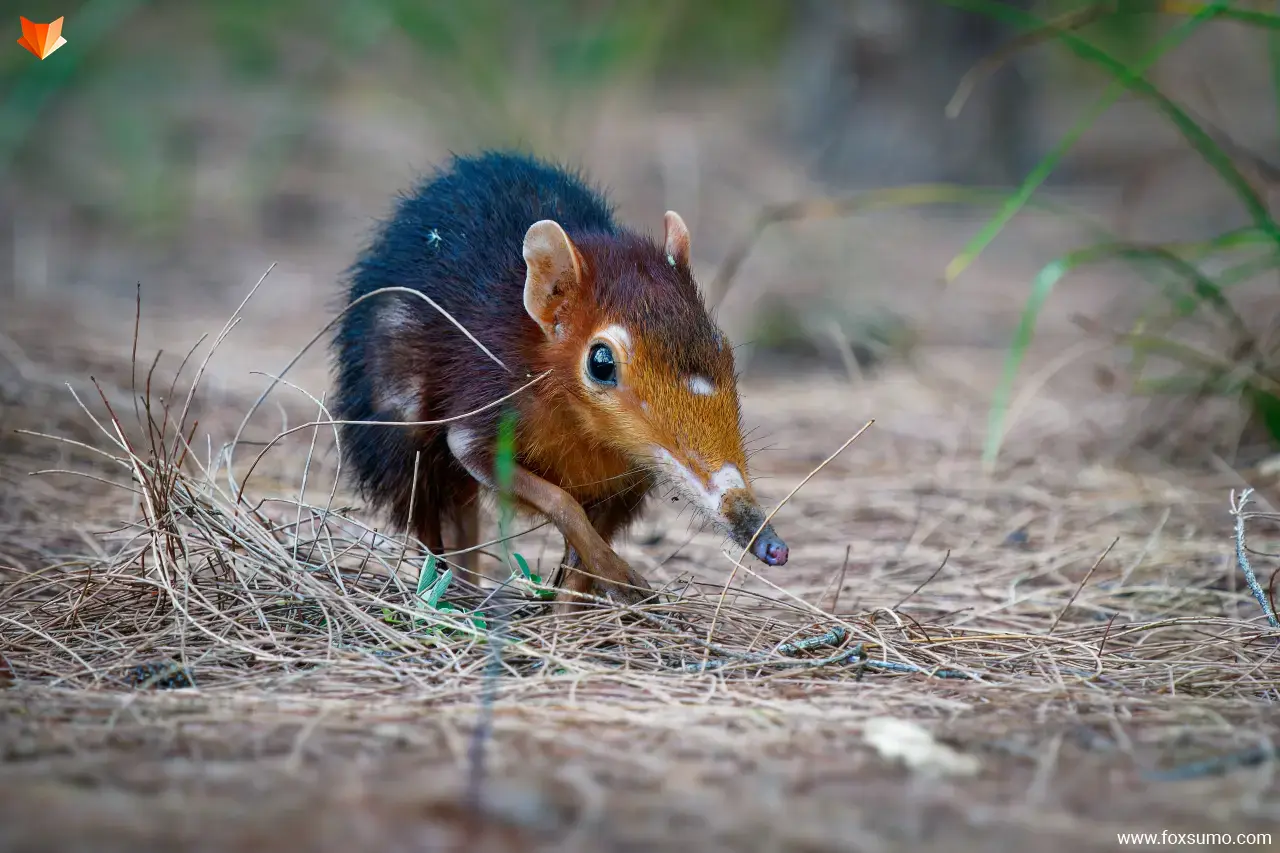
The Shrew (Soricidae) is a small mammal known for its high metabolism and voracious appetite. These tiny creatures have a heart rate that is up to ten times faster than that of a human, and they must consume their body weight in food every day to survive. Shrews have a long, pointed snout and sharp teeth, which they use to capture and eat insects and small vertebrates. With over 300 species, shrews can be found in many parts of the world, from Europe to Asia and North America.
09. Kangaroo Rat
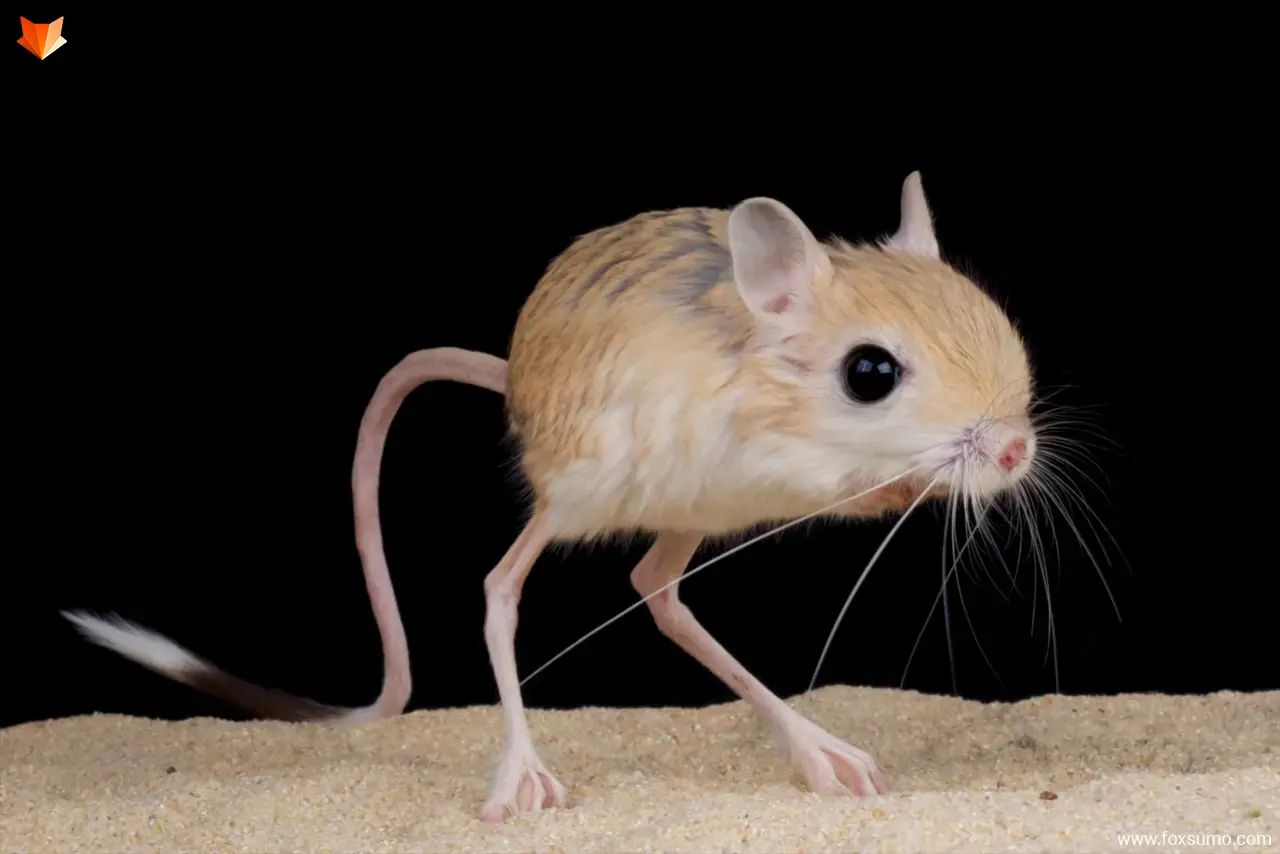
The Kangaroo Rat (Dipodomys spp.) is a small rodent that is found in arid regions of North America. These rats have powerful hind legs that allow them to move in a series of hops, similar to a kangaroo, which helps them evade predators and move quickly through their desert habitats. The Kangaroo Rat also has unique adaptations that allow it to survive in the harsh desert environment. They can live without water, obtain moisture from their food, and excrete concentrated urine to conserve water.
10. Caracal
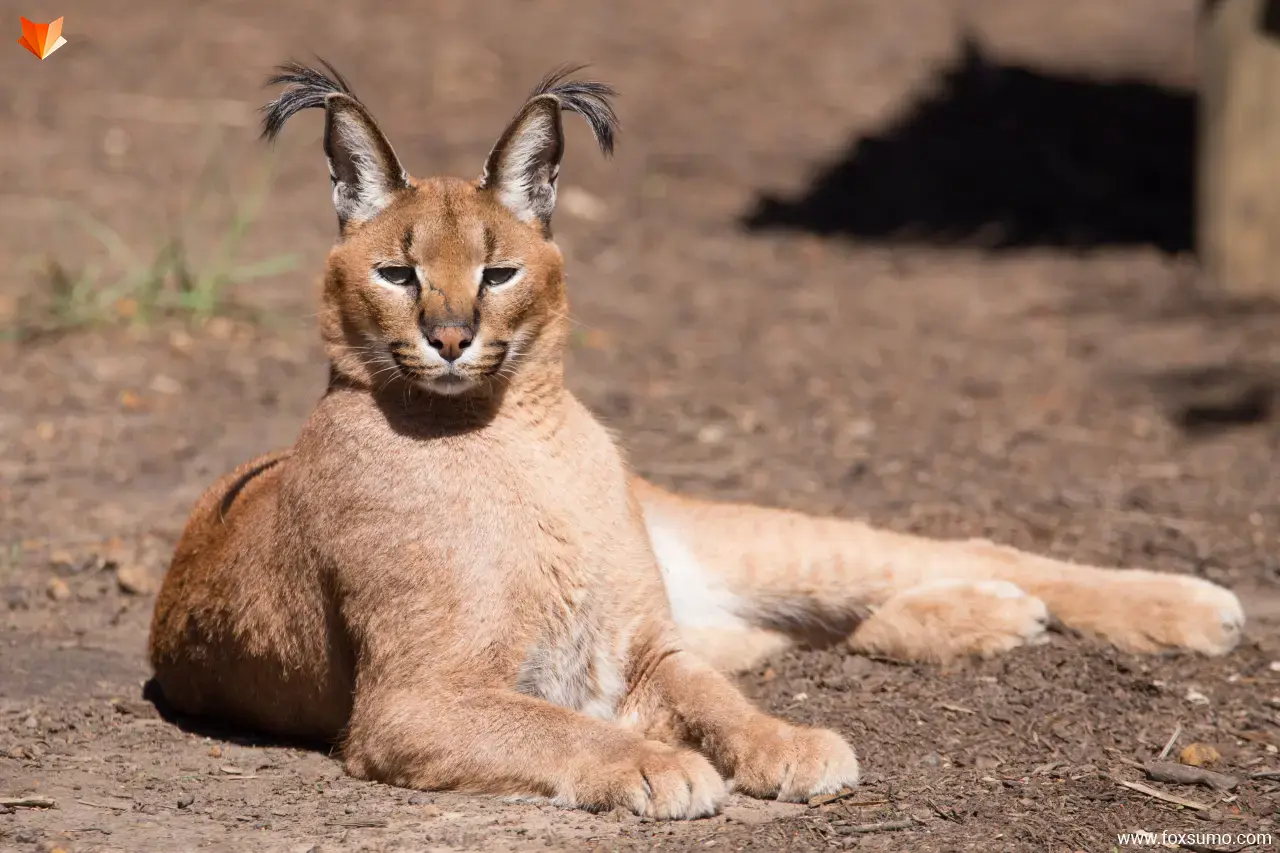
The Caracal (Caracal caracal) is a medium-sized wild cat that is found in Africa and parts of Asia. These cats are known for their striking appearance, with long tufted ears and a muscular build. Caracals are skilled hunters and can take down prey that is much larger than themselves. They have incredible agility and can jump up to twelve feet in the air to catch birds in flight. Caracals are also known for their unique vocalizations, which include purring, growling, and barking.
11. Barreleye Fish
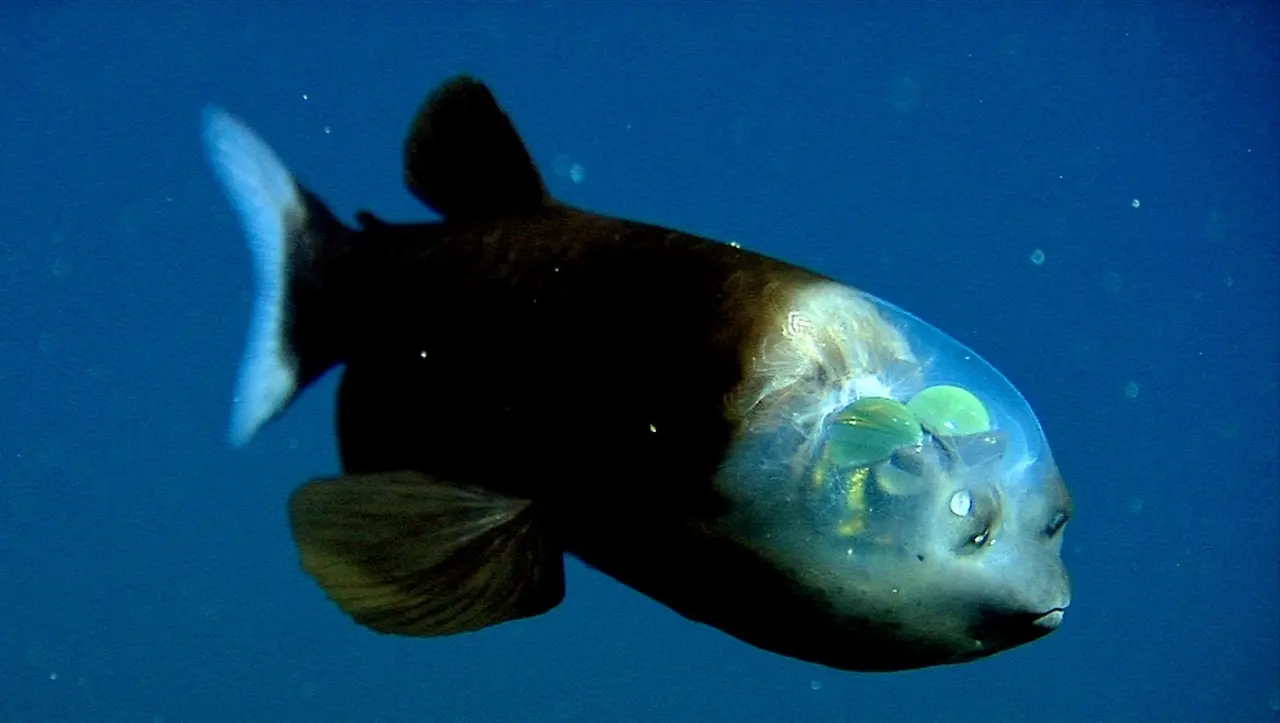
The Barreleye Fish (Macropinna microstoma) is a deep-sea fish that is known for its transparent head, which allows it to see in all directions. The fish has large, tubular eyes that can rotate within its transparent shield, which enables it to spot prey and predators above. This unique feature has earned the Barreleye Fish the nickname “spookfish.”
12. Sarcastic Fringehead
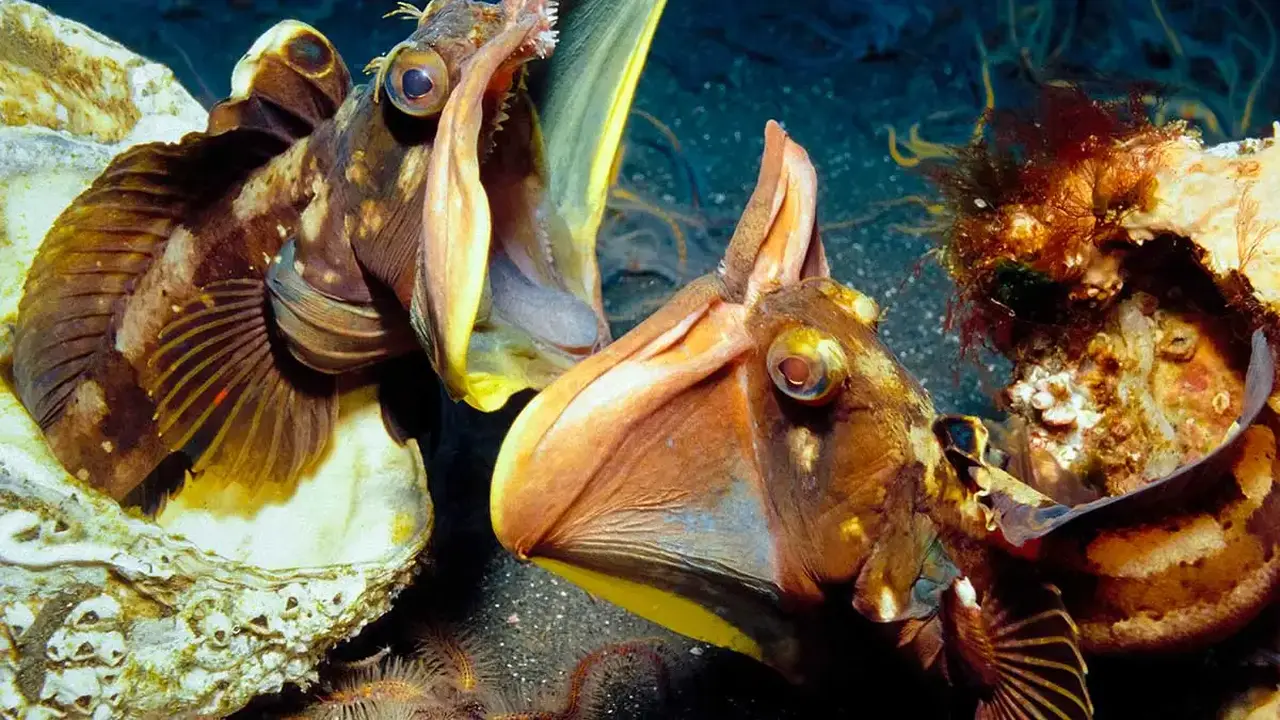
The Sarcastic Fringehead (Neoclinus blanchardi) is a small fish that can be found in the Pacific Ocean. These ugly fish are known for their aggressive behavior, and when threatened, they open their large mouths wide to reveal their bright orange interior, which can intimidate potential predators. Sarcastic Fringeheads also engage in territorial battles, in which they expand their jaws and wrestle with each other.
13. Armadillo Girdled Lizard
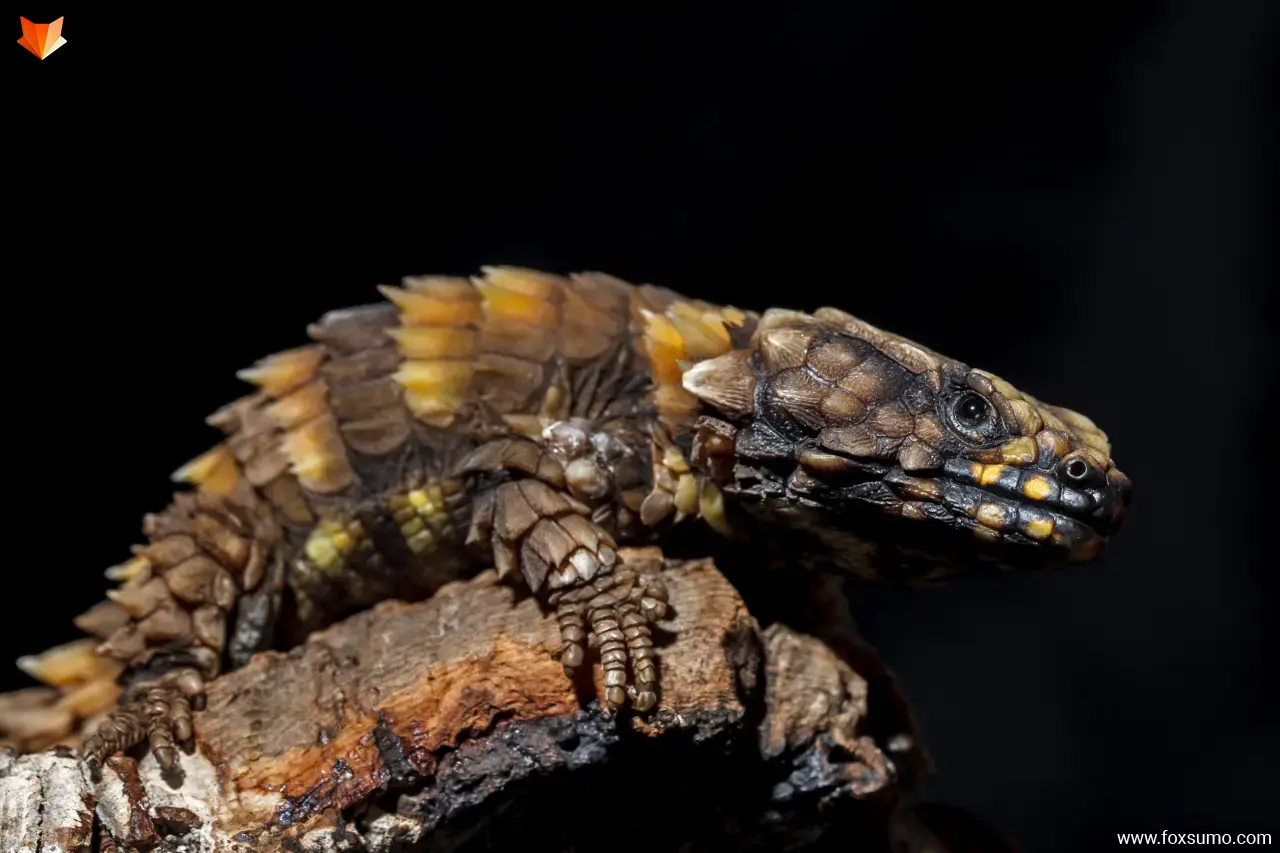
The Armadillo Girdled Lizard (Ouroborus cataphractus) is a small reptile that is native to southern Africa. These lizards have a unique adaptation for defense: they can roll themselves into a ball, much like an armadillo, to protect their soft underbelly from predators. Their tough, scaly skin provides a natural armor, and their sharp spines deter any predators that attempt to attack them.
14. Amazonian Royal Flycatcher
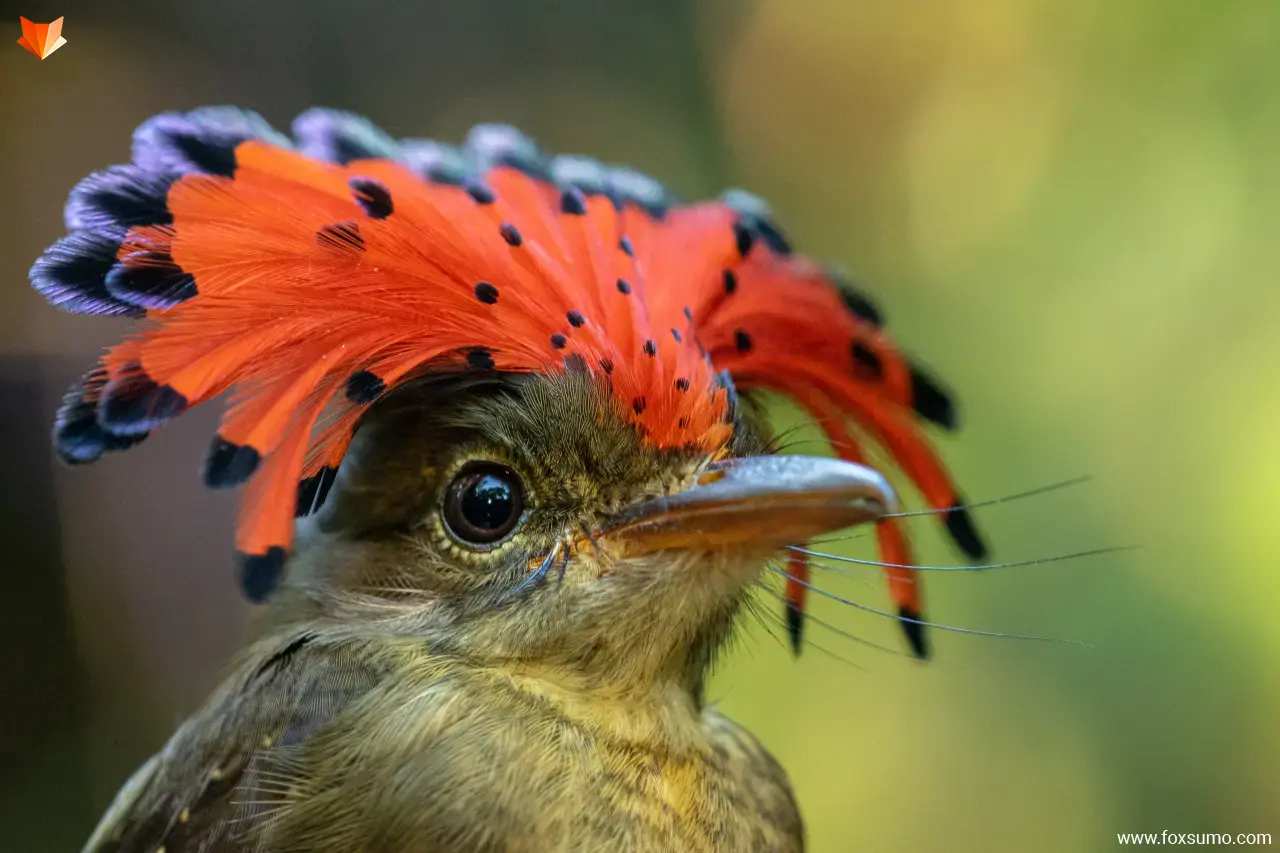
The Amazonian Royal Flycatcher (Onychorhynchus coronatus) is a small bird that can be found in the Amazon Rainforest. These birds have a distinctive feather crest on their head, which they raise and lower depending on their mood or to attract a mate. During courtship displays, male Royal Flycatchers will display their crests to impress females.
15. Cyphonia Clavata
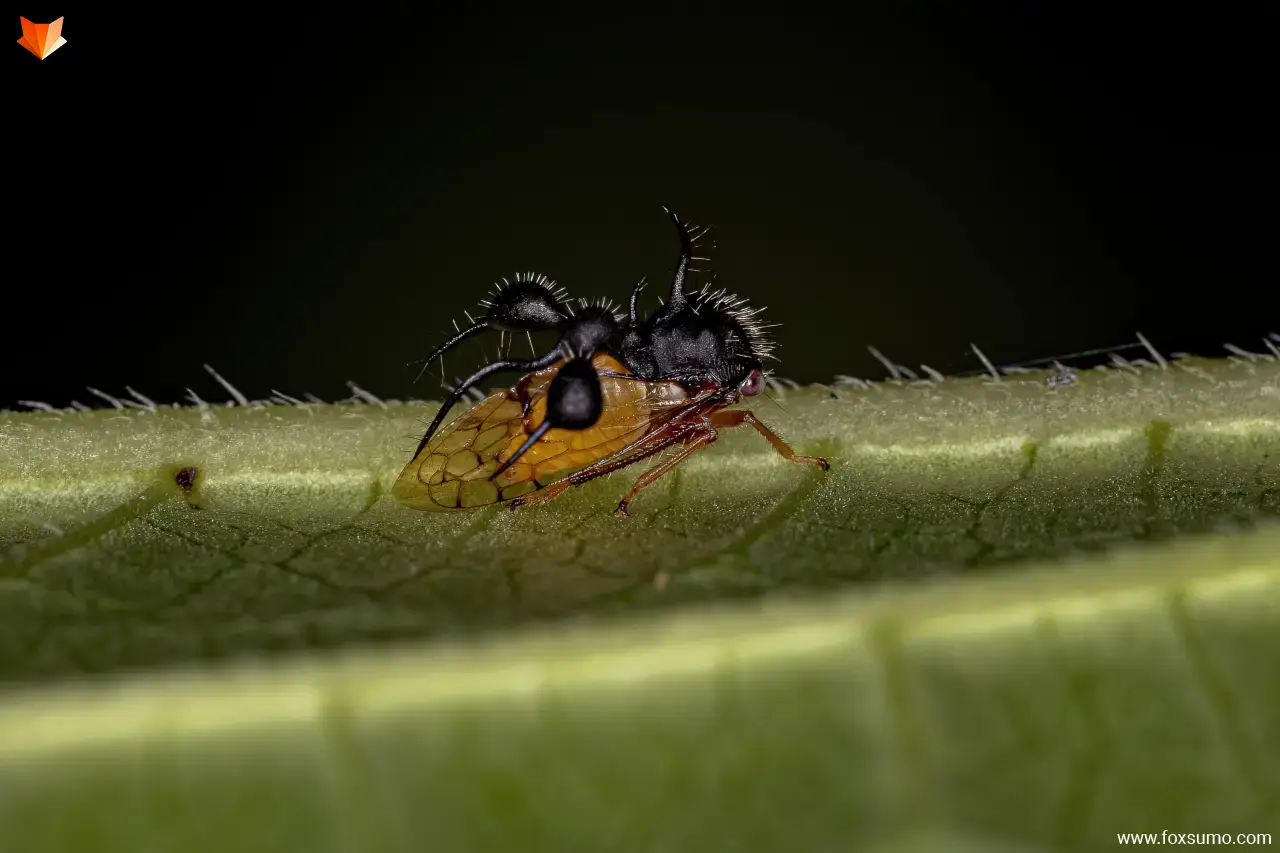
Cyphonia Clavata is a species of treehopper that is found in Central and South America. These small insects have a unique adaptation for camouflage: they have a horn-like projection on their head that resembles an ant. This horn, along with their body shape and color, helps them blend in with the surrounding environment and avoid detection by predators.
16. Tenrec
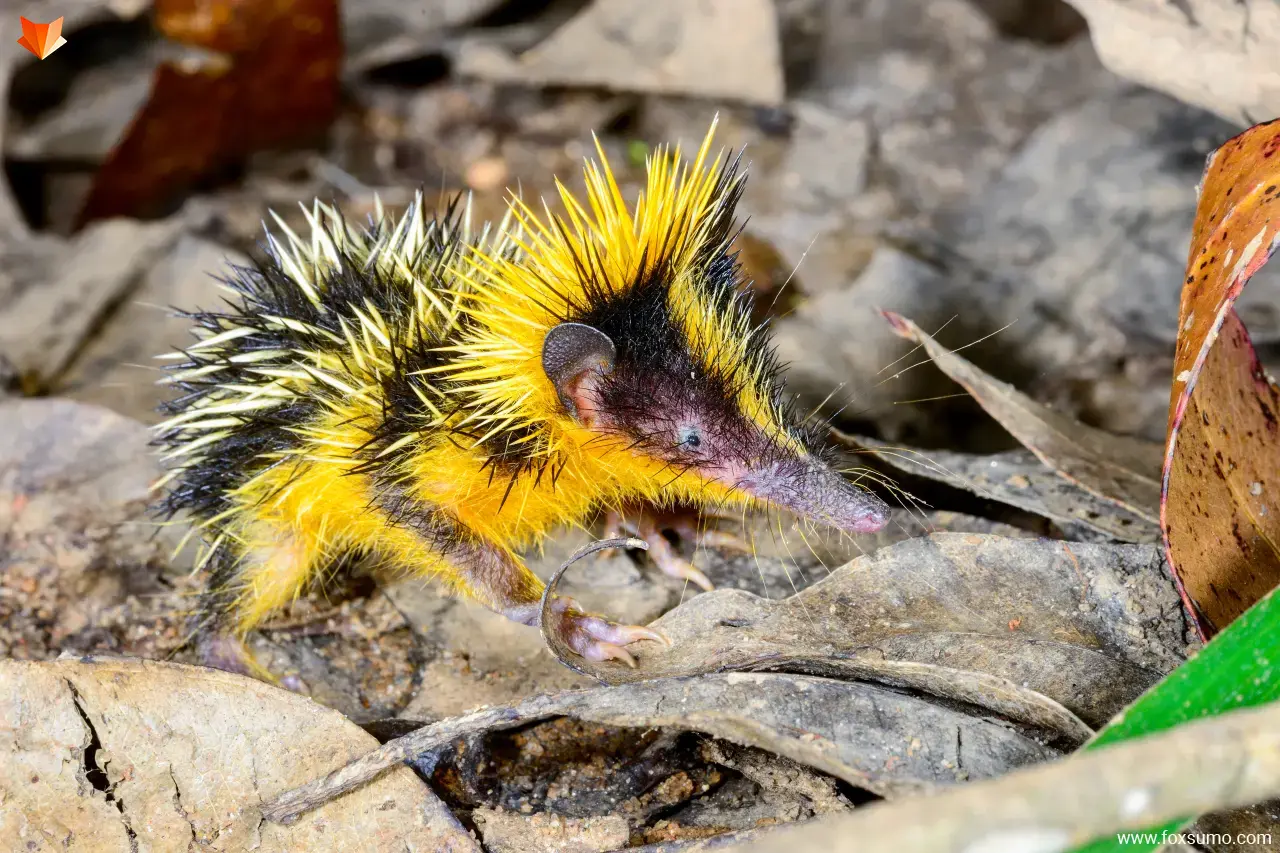
The Tenrec is a small mammal that can be found on the island of Madagascar and parts of Africa. Tenrecs belong to the Tenrecidae family, and they exhibit a wide range of unique characteristics. These peculiar creatures have spiky quills, similar to hedgehogs, and some species have elongated snouts resembling that of an anteater. They are incredibly diverse, with different species adapted to various habitats and exhibiting various behaviors, including burrowing, climbing, and swimming.
17. Dugong
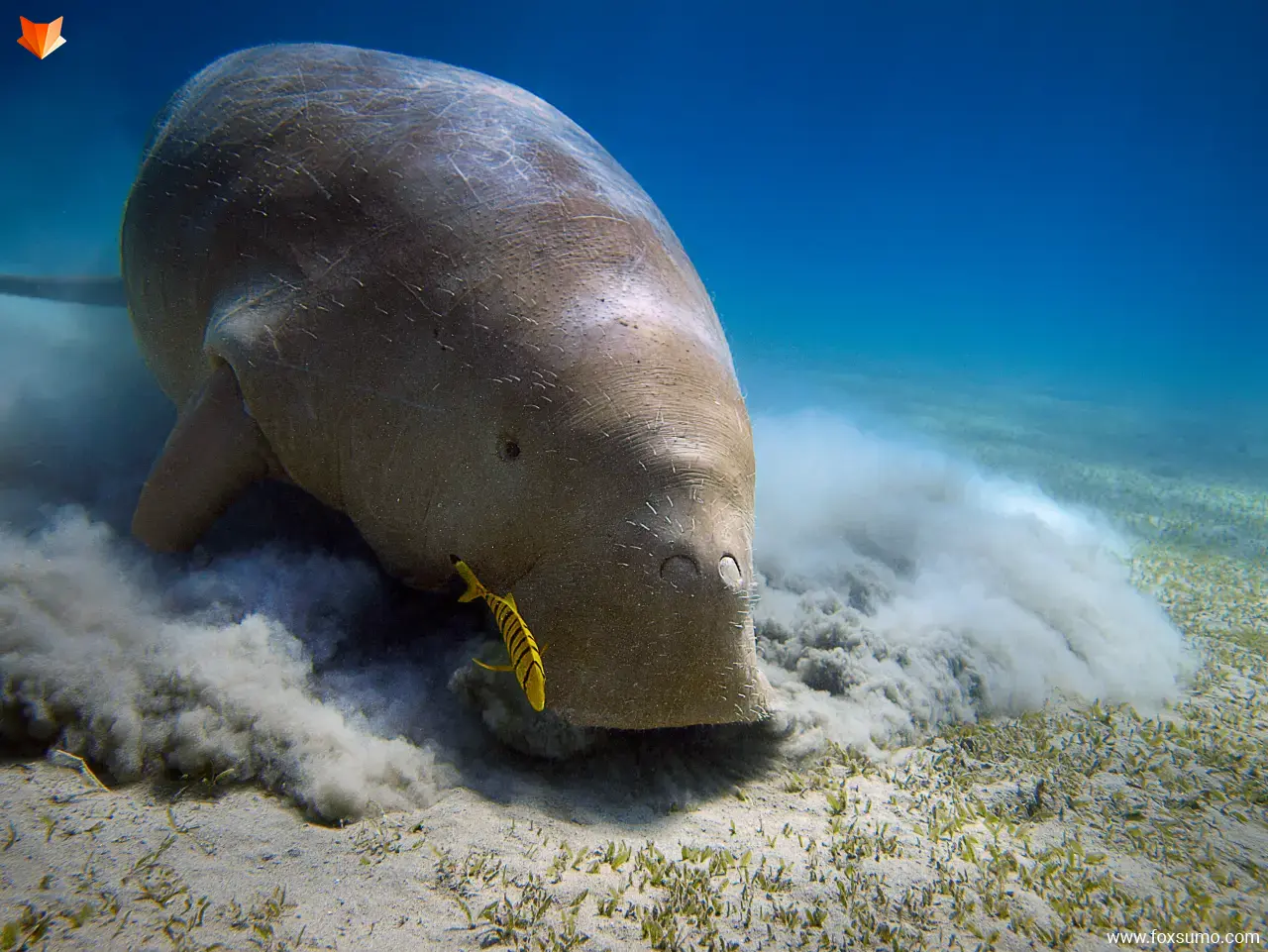
The Dugong (Dugong dugon) is a large marine mammal that can be found in the warm coastal waters of the Indian and Pacific Oceans. Often referred to as “sea cows,” Dugongs are closely related to manatees. These gentle herbivores have a streamlined body and a unique snout that resembles a dolphin’s beak. Dugongs are known for their peaceful nature and their important role in seagrass ecosystems.
18. Philippine Eagle
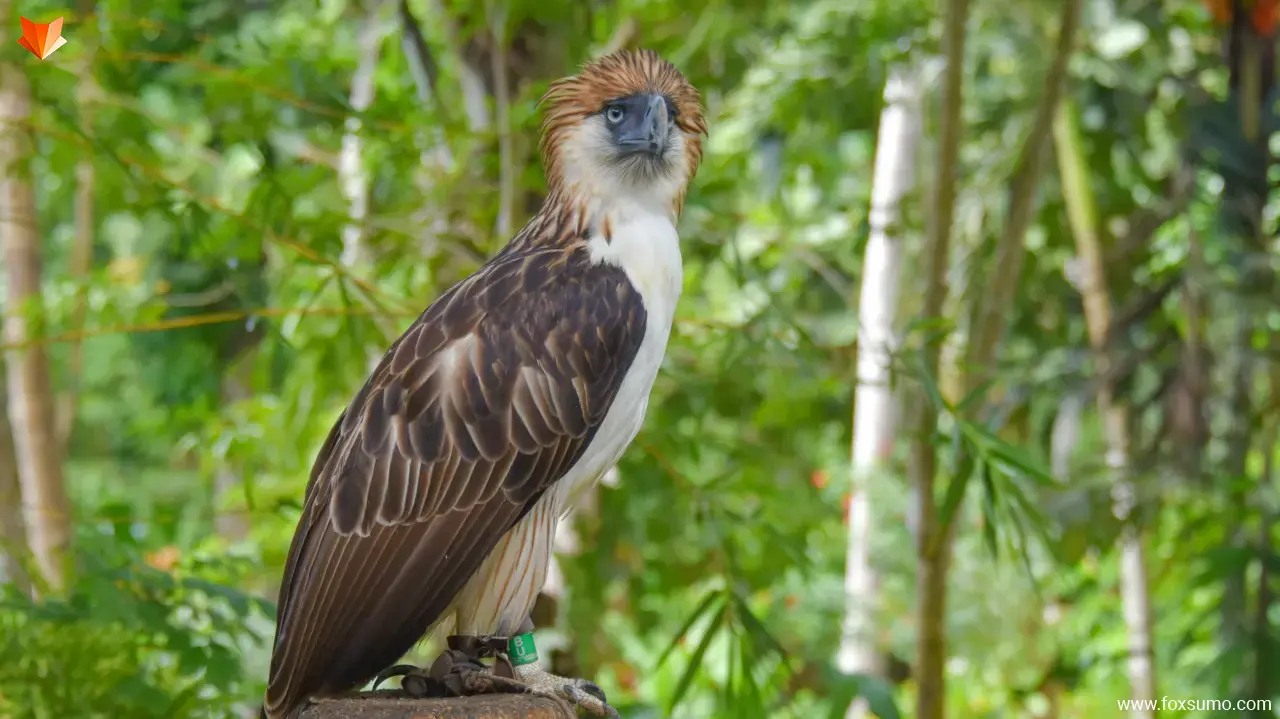
The Philippine Eagle (Pithecophaga jefferyi) is one of the world’s largest and rarest eagles, endemic to the Philippines. Also known as the “Monkey-eating Eagle,” it is a magnificent and powerful bird of prey. With a wingspan reaching up to 7 feet (2.1 meters) and a distinctive crest of feathers, the Philippine Eagle is an apex predator. It primarily feeds on monkeys, flying lemurs, and other small mammals. Unfortunately, this majestic species is critically endangered due to habitat loss and hunting.
19. Giant Salamander
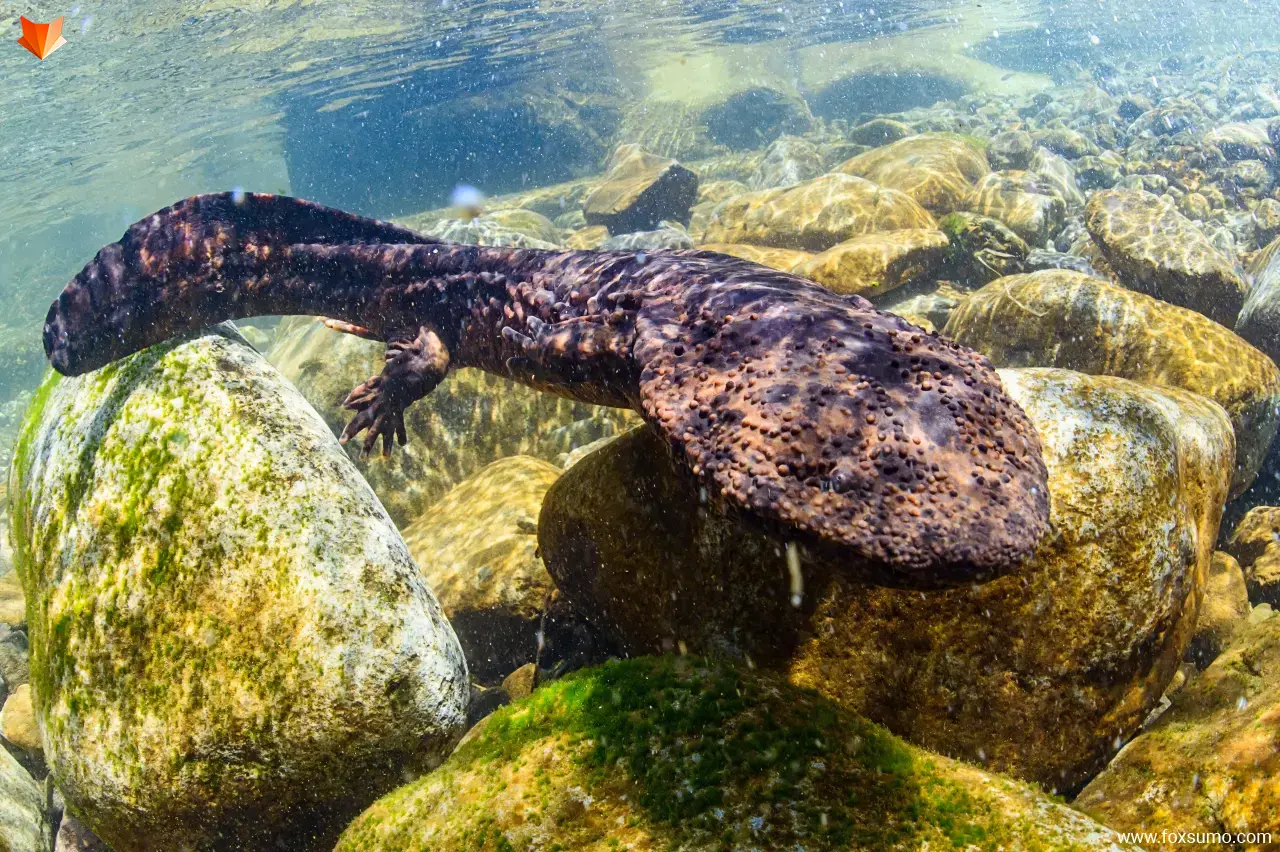
The Giant Salamander (Andrias davidianus) is the largest amphibian in the world and can be found in China and Japan. They can grow up to 6 feet (1.8 meters) in length and weigh up to 140 pounds (63 kg). With their flattened heads, slimy skin, and small eyes, Giant Salamanders might not seem like the most attractive animals, but they are fascinating nonetheless. These aquatic creatures have a unique ability to regenerate lost limbs and organs, making them one of the most remarkable amphibians in the world.
20. Gharial
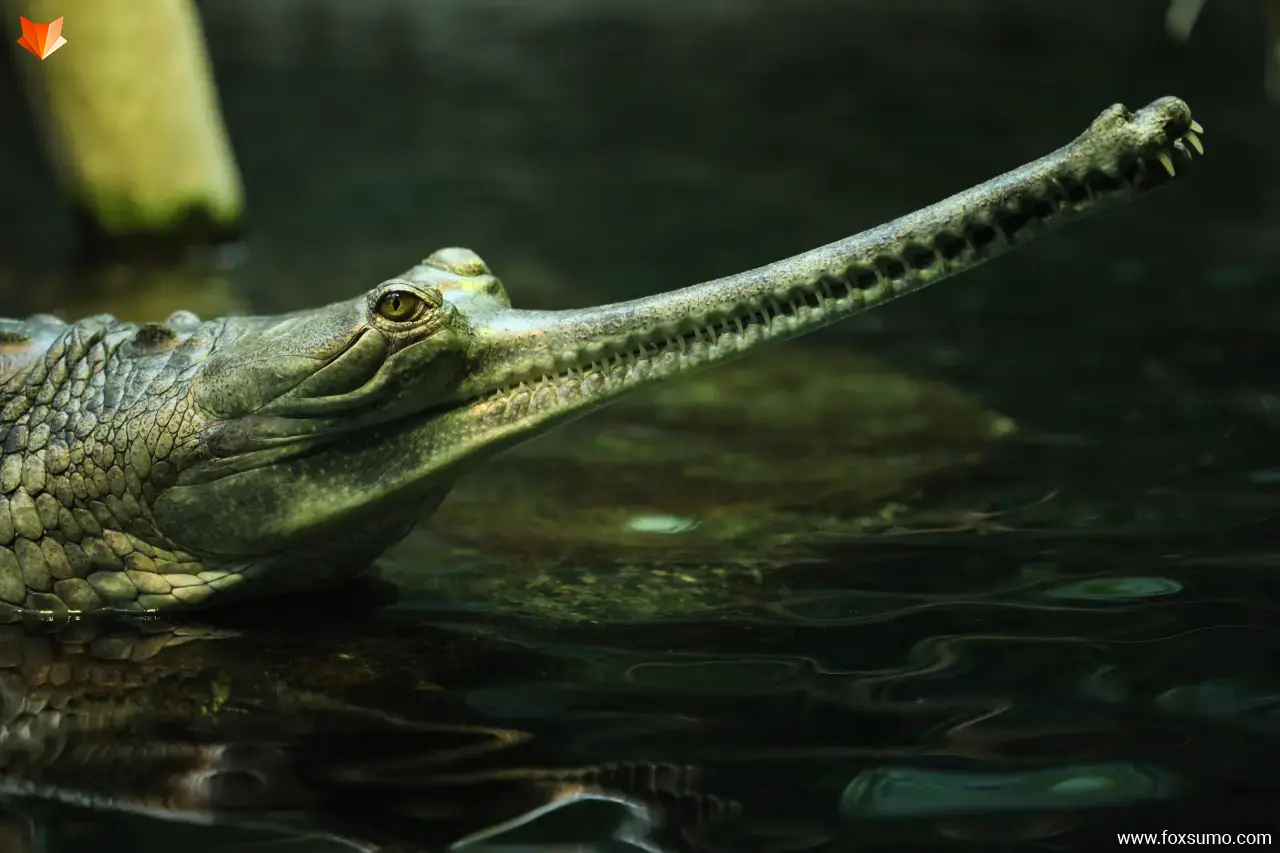
The Gharial (Gavialis gangeticus) is a critically endangered crocodilian species found in the rivers of India and Nepal. These aquatic reptiles have a distinctive long and narrow snout that is filled with teeth, perfectly adapted to catch fish, their primary prey. Unfortunately, the Gharial population has drastically declined due to habitat loss, pollution, and hunting, making them one of the rarest crocodilians in the world.
21. Long-Wattled Umbrellabird
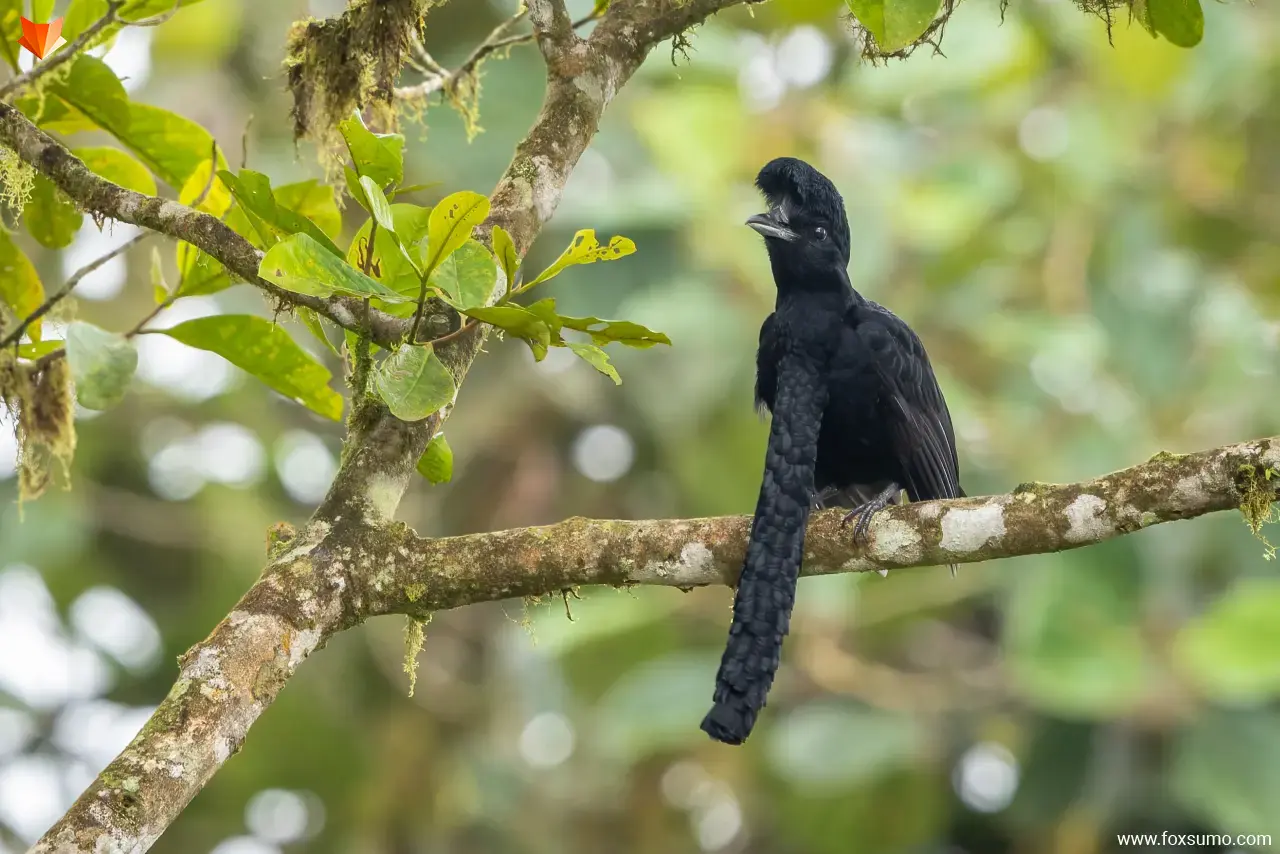
The Long-Wattled Umbrellabird (Cephalopterus penduliger) is a striking bird found in the cloud forests of South America. The males have an impressive long wattle hanging from their throat that they can inflate and shake during courtship displays, producing a deep booming sound that can be heard from a distance. These birds are essential seed dispersers and play a vital role in the forest ecosystem.
22. Oilbird
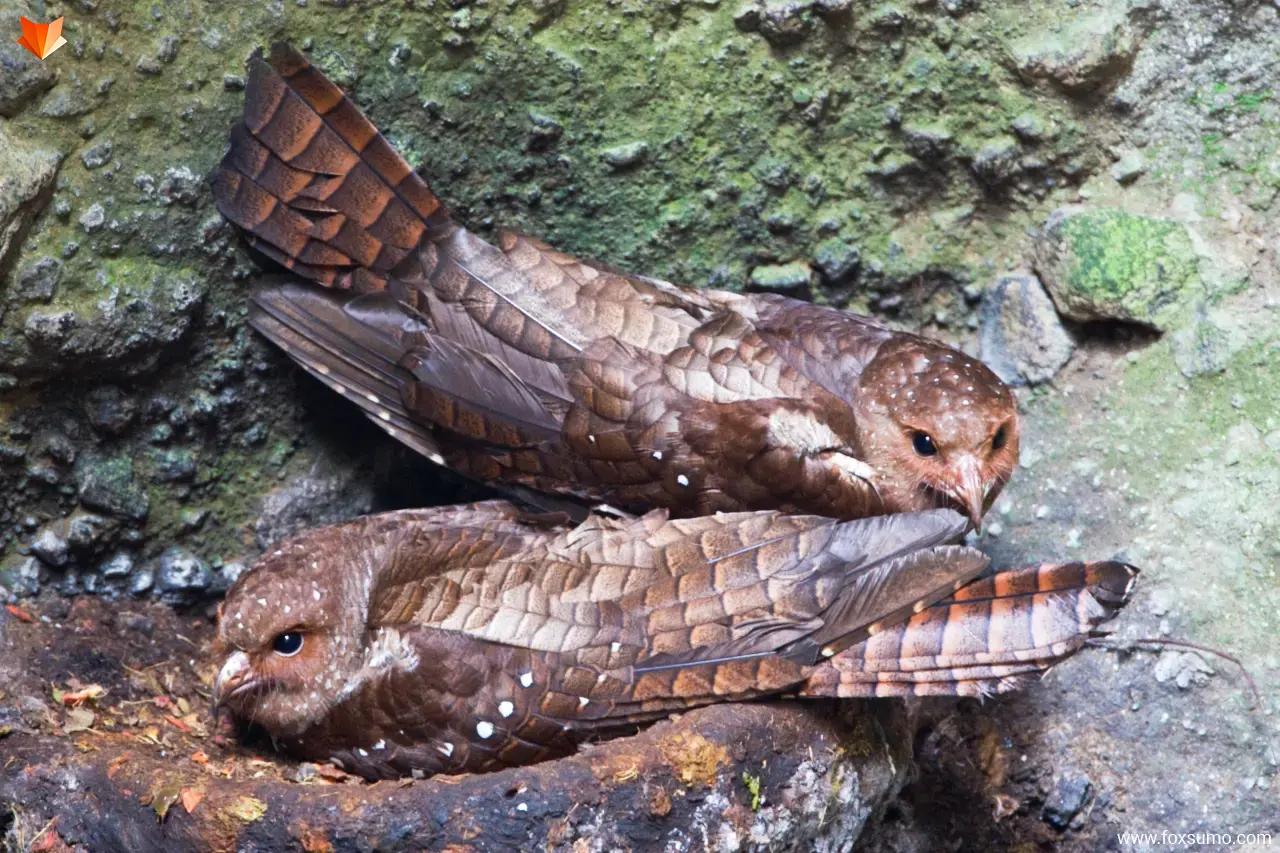
The Oilbird (Steatornis caripensis) is a nocturnal bird found in the caves of Central and South America. These unusual birds have a remarkable ability to echolocate using clicks and whistles to navigate in complete darkness. Oilbirds have a unique diet, feeding primarily on the fruit of oil palm trees. They have a unique digestive system that can break down and excrete large amounts of oil, making them one of the few bird species that produce oil as part of their metabolism.
23. Aardvark
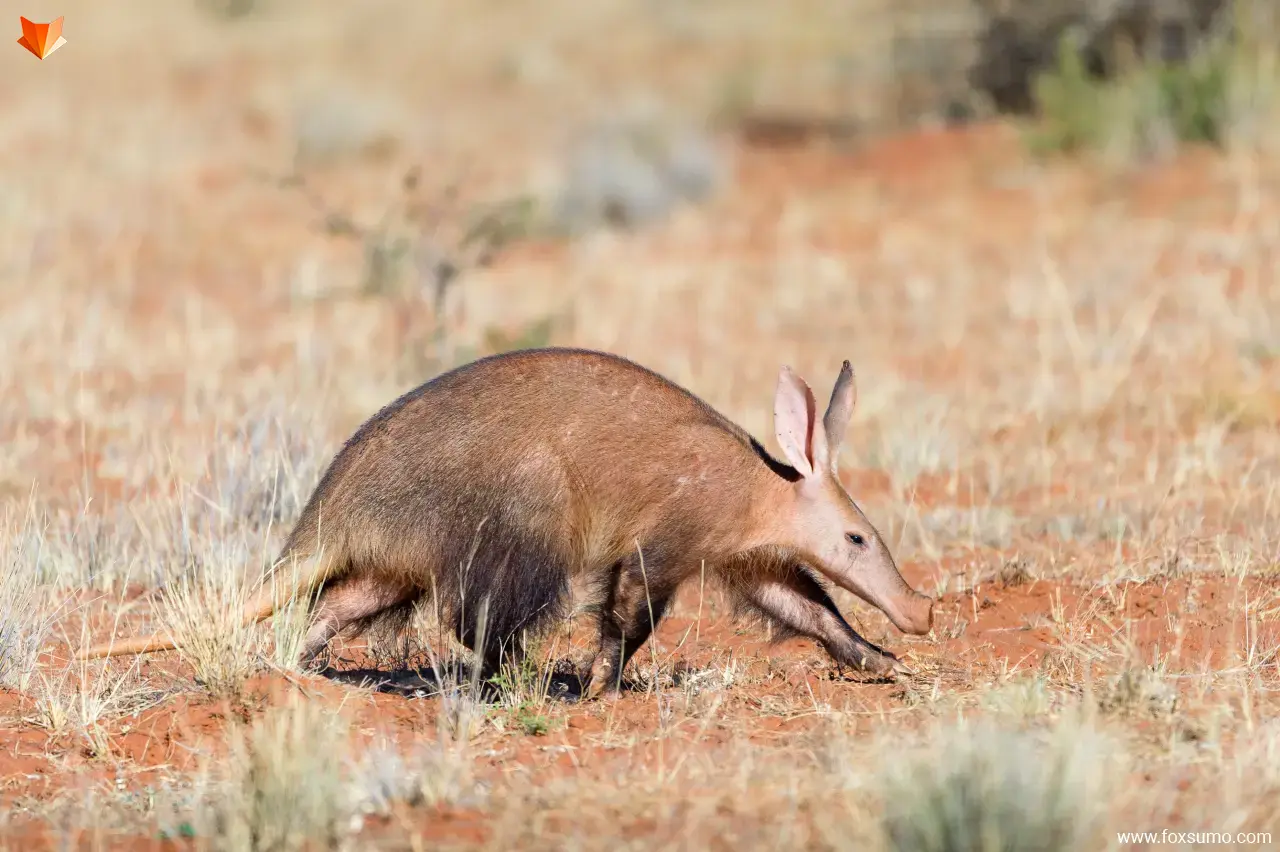
The Aardvark (Orycteropus afer) is a nocturnal mammal found in sub-Saharan Africa. These creatures have a distinctive appearance, with a long snout, large ears, and a long tail. Aardvarks are well adapted to their environment, with their powerful digging abilities and strong claws, which they use to excavate burrows to sleep in during the day. They are primarily insectivores, feeding on ants and termites, which they catch using their long, sticky tongue. Despite their unique appearance and interesting behaviors, Aardvarks are rarely seen in the wild, making them a mysterious and elusive species.
Final Thought
The animal kingdom is vast and diverse, and these weird animals demonstrate just how strange and unusual some species can be. From the Honeypot Ants’ ability to store food in their bodies to the Flying Fish’s ability to glide through the air, each of these animals has its unique features and behaviors that make them stand out from the rest. As we continue to explore and study the natural world, we are sure to uncover more bizarre and fascinating creatures that will continue to amaze and astound us.
